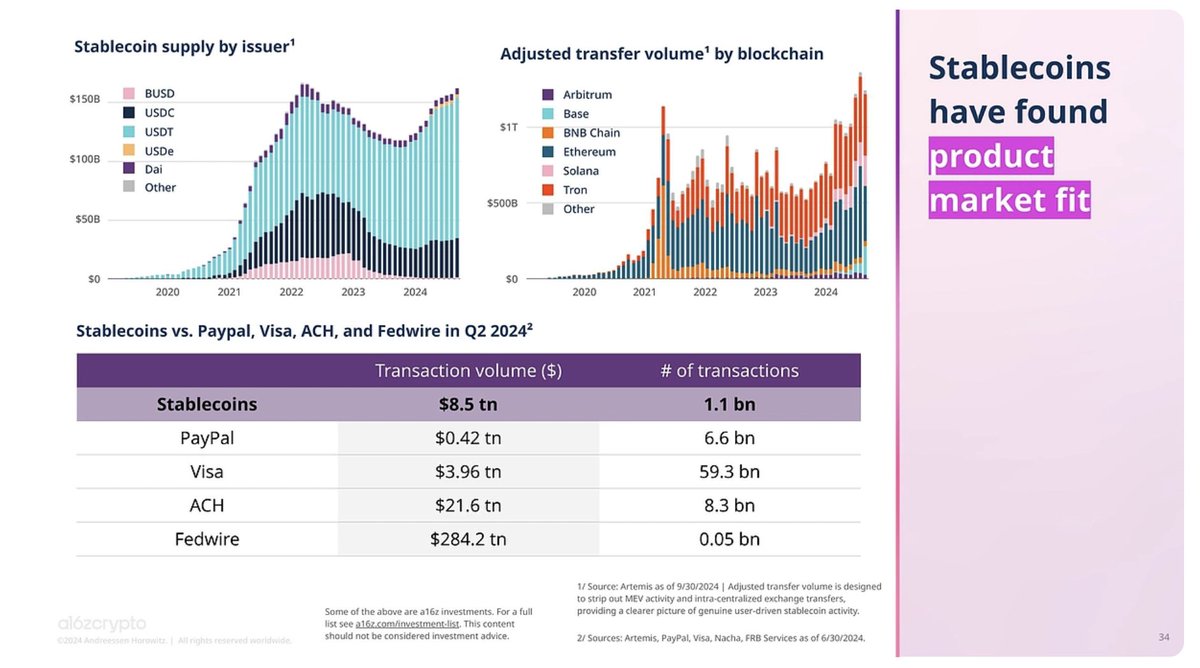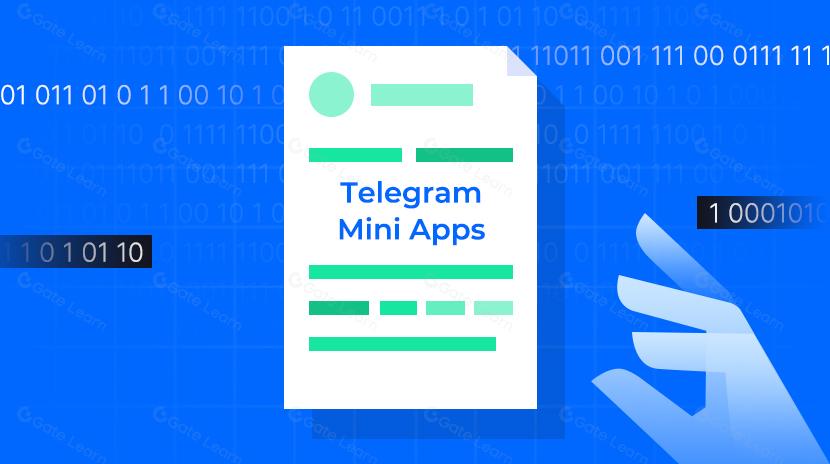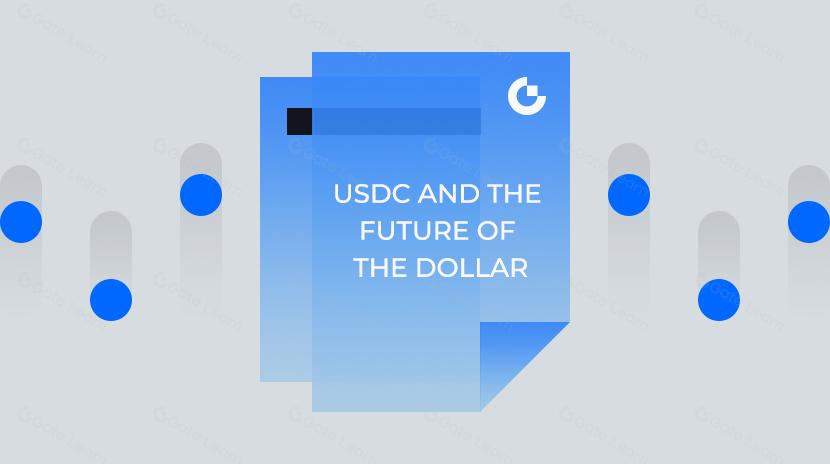ارتفع بي فاي: طبقة الدفع في المستقبل
على الرغم من أن بيتكوين وإيثريوم فتحا الطريق للمدفوعات الرقمية، إلا أن قيودهم في السرعة والتكلفة والتقلبات تمنعهم من تحقيق القبول الرئيسي. نادراً ما نرى الناس يشترون القهوة أو يدفعون الإيجار بالبيتكوين أو الإيثريوم. لماذا؟ الجواب بسيط: رسوم المعاملات العالية وأوقات التسوية البطيئة وتقلب الأسعار يجعلها غير عملية للاستخدام اليومي.
العملات الثابتة مثل USDC و PYUSD قد ساهمت في تحسين كفاءة الدفع، ولكنها لا تزال لم تفتح بالكامل قيمة الوقت للمال أو توفر التكامل السلس مع النظام المالي التقليدي. هنا حيث يربط PayFi بين DeFi، RWA، والائتمان على السلسلة، مما يجعل الدفع فوريًا وكفؤًا وقابلاً للتوسيع.
باي في، الاختصار للتمويل الدفعي، هو نموذج مبتكر يجمع بين الأنظمة التقليدية للدفع والخدمات المالية اللامركزية باستخدام تكنولوجيا سلسلة الكتل. يهدف هذا التكامل إلى تعزيز كفاءة وشفافية وإمكانية الوصول إلى المعاملات المالية.

أساس PayFi: القيمة الأساسية المقترحة
في جوهر PayFi يقع قيمة الوقت للمال (TVM)، وهو مبدأ مالي أساسي يقول إن المال اليوم يستحق أكثر من نفس الكمية في المستقبل بسبب قدرته على الكسب المحتمل.
ببساطة، هل تفضل أن تحصل على $100 اليوم أم نفس $100 بعد عام؟
معظم الناس سيختارون الحصول عليه اليوم لأن هذا المال يمكن استثماره أو رهنه، أو استخدامه لتوليد عوائد، في حين أن المال الذي يتم استلامه في وقت لاحق يفقد النمو المحتمل بسبب التضخم وتكلفة الفرصة.
كيف يفتح PayFi قيمة الوقت للمال
التمويل التقليدي يحتجز رأس المال في أنظمة بطيئة الحركة. التسويات المتأخرة والأصول غير السائلة والهياكل الائتمانية الصلبة تمنع الأموال من العمل بكفاءة، مما يخلق عقبات للأفراد والشركات على حد سواء. تغير PayFi هذا من خلال تمكين المعاملات في الوقت الحقيقي، والإقراض التلقائي، والوصول الفوري إلى تدفقات النقد المستقبلية، مما يبقي السيولة في حركة.
سواء كان تحويل "اشتر الآن، ادفع لاحقًا" إلى نموذج يولد عوائد، أو مساعدة الشركات في الوصول إلى الأموال المحتجزة في الفواتير الغير مدفوعة، أو منح الأشخاص الذين ينشئون محتوى الوصول الفوري إلى أرباحهم، فإن PayFi يجعل الأنظمة المالية أكثر مرونة وكفاءة. من خلال ربط DeFi و RWAs والائتمان السلسلة، يضمن أن المال ليس مجرد جلوس خاملاً - بل يعمل بنشاط.
اشتر الآن، ادفع أبدًا (BNPN): الانتقال إلى ما وراء الإنفاق المدفوع بالديون
يعيد BNPN تفكير كيفية قيام الناس بعمليات الشراء من خلال استبدال الديون بالإنفاق القائم على العوائد. بدلاً من أخذ القروض وسدادها بالأقساط، يقوم المستخدمون برهن الأصول واستخدام العائد لتغطية المصروفات. رأس المال الأساسي يبقى دون تغيير، بحيث يمكنهم الإنفاق دون الحاجة لاقتراضه.
قبل PayFi:
الخدمات التقليدية للشراء الآن والدفع لاحقًا تبدو مريحة في البداية، ولكنها تعتمد على الائتمان والديون. غالبًا ما يواجه المستخدمون رسومًا مخفية ورسوم فائدة وعقوبات تأخير، مما يجعل العمليات الشرائية أكثر تكلفة مع مرور الوقت. يمكن أن يؤثر حتى عدم الدفع على درجة الائتمان الخاصة بهم.
مع PayFi:
بدلاً من الاقتراض، يتيح لمستخدمي BNPN رهن أصولهم واستخدام العائد الناتج لدفع المشتريات. يحصلون على فوائد الإنفاق دون عبء التسديد المالي. لا فوائد، ولا رسوم تأخير، ولا تأثير على السجل الائتماني - فقط إنفاق أكثر ذكاءً وأكثر استدامة.
تمويل الحسابات المدينة (ARF): حل تحديات تدفق النقد للشركات
بالنسبة للشركات، قد يكون انتظار الدفعات عائقًا كبيرًا. يتيح ARF للشركات تحويل الفواتير الغير المدفوعة إلى أموال في الوقت الحقيقي، مما يضمن تدفق نقدي مستقر دون الاعتماد على قروض مكلفة أو خطوط ائتمان.
قبل PayFi:
الشركات غالبًا ما تضطر إلى الانتظار لأسابيع أو حتى أشهر حتى يدفع العملاء الفواتير. هذا التأخير يجعل من الصعب إدارة العمليات ودفع الرواتب والاستثمار في النمو. يلجأ الكثير إلى القروض أو خطوط الائتمان لسد الفجوة، مما يزيد التكلفة من خلال دفعات الفائدة.
مع PayFi:
تمكن تمويل الحسابات المدينة (ARF) الشركات من ترميز الفواتير والحصول على سيولة فورية. بدلاً من الانتظار حتى تسوية المدفوعات، يمكنهم تحويل المستحقات المستحقة على الفور إلى رأس المال، مما يضمن سير العمل بسلاسة ويقلل من الاعتماد على التمويل التقليدي.
تحقيق الربح للمبدعين: لا مزيد من الانتظار لتحقيق العوائد
يضع مبدعو المحتوى الجهد اليوم ولكن غالبًا ما ينتظرون أسابيع أو شهورًا للحصول على أجرهم. تغير PayFi هذا من خلال السماح لهم بالوصول إلى أرباحهم المستقبلية على الفور، بحيث يمكنهم إعادة استثمار أموالهم في عملهم دون تباطؤ مالي.
قبل PayFi:
منصات مثل يوتيوب، باتريون، وتويتش تحتجز أرباح الخالقين لفترات ممتدة قبل إطلاقها. يجعل هذا التأخير من الصعب على الخالقين تمويل مشاريع جديدة، ترقية معداتهم، أو ببساطة إدارة تدفق نقودهم.
مع PayFi:
من خلال استخدام نماذج الإقراض اللامركزية، يمكن للمبدعين الوصول إلى دخلهم المتوقع كلما احتاجوا إليه. بدلاً من الانتظار لتحويلات المنصة، يمكنهم تحويل الإيرادات المستقبلية إلى رأسمال اليوم، مما يجعل من الأسهل نمو والحفاظ على عملهم الإبداعي.
المناظر الطبيعية لـ PayFi

تخيل PayFi كهيكل مالي متعدد الطبقات، حيث يلعب كل طبقة دورًا حيويًا في تمكين عمليات الدفع اللامركزية من أن تكون أسرع وأكثر كفاءة وقابلة للتوسيع.
1. طبقة التطبيق (تجربة الواجهة الأمامية)
يمكن رؤيتها كالتطبيقات التي تتفاعل معها يوميًا، سواء كانت منصات الدفع أو خدمات الإقراض أو محافظ الديفي. هذه الشركات تقوم ببناء تجارب مستخدم حقيقية في العالم الحقيقي على أساس تقنية PayFi.
هنا حيث يتصل المستخدمون والشركات وتطبيقات الأعمال المالية مع PayFi. من الإقراض DeFi إلى المدفوعات عبر الحدود، تجعل هذه الطبقة PayFi متاحة.
هنا بعض المشاريع التي تدفع اعتماد العالم الحقيقي من خلال تضمين المدفوعات المدعومة بتقنية سلسلة الكتل في التمويل اليومي:
- @条纹يجعل من السهل على الشركات قبول المدفوعات بالعملات المشفرة مع الحفاظ على الامتثال للتمويل التقليدي.
- @雨 و @收割全球التركيز على تبسيط المدفوعات عبر الحدود، ومعالجة الفجوات الحقيقية في المعاملات العالمية.
- @arf_oneيقوم بربط الائتمان الفوري مع تمويل التجارة الذي يعتمد على العملات المستقرة.
تشمل اللاعبين البارزين الآخرين @Bitso،@sanctumso،@sphere_labs، @KulipayXYZ, @fonbnk1, وغيرهم.
2. طبقة التمويل (Capital Movers)
هنا حيث يحدث سحر PayFi الحقيقي — مقدمو السيولة، أسواق الائتمان، والأدوات المالية تعمل هنا. هذه البروتوكولات تساعد المستخدمين على فتح الأموال، الاقتراض، والإقراض في الوقت الحقيقي.
إذا كان PayFi سيارة، فهذه الطبقة هي المحرك — دفع الأموال إلى حيث تحتاج في ثوانٍ بدلاً من أيام.
تشمل بعض الكيانات الرائدة في هذا المجال:
- @humafinance، الذي رسخ القروض المرصوفة بتدفقات النقد المستقبلية، مما يتيح للشركات والأفراد الاقتراض استنادًا إلى الأرباح المتوقعة.
- @CredoraNetwork, مما يجعل تقييم المخاطر أكثر شفافية وقابلية للتنفيذ، مما يوفر للمقرضين والمقترضين ومشاركي النظام البيئي الثقة لاتخاذ قرارات مستنيرة.
3. طبقة الامتثال (المراقبون)
العملات المشفرة تتطلب لا زالت الأمان والامتثال، ويضمن هذا الطبقة أن تتدفق الأموال بأمان وقانونيا. الشركات هنا تركز على اكتشاف الاحتيال، ومعرفة العميل، ومكافحة غسيل الأموال، وإدارة مخاطر التنظيم.
بدون الامتثال، سيتباطأ اعتماد PayFi بسبب عدم وضوح التنظيم. تساعد هذه المنصات على ربط DeFi بالتنظيمات الواقعية.
- @链分析يساعد في تتبع عمليات سلسلة الكتل، ومنع الاحتيال وضمان عمل PayFi في بيئة شرعية وصحية.
- @trmlabsتختص في مراقبة المخاطر في الوقت الحقيقي، مما يساعد المؤسسات والجهات التنظيمية على ضمان أمان المعاملات المالية.
- @Polyflow_PayFi, بروتوكول PayFi يربط الأصول الحقيقية مع ديفي من خلال بنية دفع العملات المشفرة المرنة والمطابقة للامتثال.
- @椭圆形، وهي شركة تحليلات سلسلة الكتل تقدم استخبارات المخاطر وحلول الامتثال وكشف الاحتيال للشركات المشفرة والجهات التنظيمية.
4. طبقة العهد (الخزينة الرقمية)
هذه الطبقة توفر تخزين آمن للأصول، مضمونة أن المؤسسات والأفراد لا يفقدون الأموال بسبب الاختراقات أو سوء الإدارة. فكر في هذا على أنه ما يعادل العملات المشفرة لخزانة البنك.
المؤسسات الكبيرة تحتاج إلى طرق آمنة لحفظ الأموال قبل دخولها إلى سوق PayFi.
- @FireblocksHQهي واحدة من أكثر الشركات المعترف بها في مجال أمان الأصول الرقمية، وتقدم حلول عبء المستودع على مستوى المؤسسات.
- @قاعدة النحاس و @Cobo_Globalالتركيز على أمان الحسابات متعددة الأطراف (MPC)، ومساعدة المؤسسات في إدارة الأصول بأمان.
5. طبقة العملة (العملة نفسها)
تعمل هذه الطبقة على تنفيذ المعاملات الفعلية، باستخدام العملات المستقرة والأصول الرقمية لنقل القيمة بفعالية عبر الحدود.
بدون العملات الرقمية، لن يكون هناك PayFi - العملات المستقرة تضمن أن يكون التعامل سريعًا ومنخفض التكلفة وغير مقيد بالحدود.
USDC و PYUSD (بواسطة 圆圈&بايبال) هي عملات مستقرة مُنظَّمة تجعل عمليات الدفع الخاصة بـ PayFi أكثر موثوقية للشركات والمؤسسات المالية.
حبل(USDT) يظل العملة المستقرة الأكثر استخدامًا، مما يضمن السيولة عبر الأسواق العالمية.

6. طبقة المعاملات (البنية التحتية L1/L2 للبلوكشين)
الطبقة الأساسية التي تجعل كل هذا ممكنًا. يتم معالجة الصفقات والتحقق منها وتسويتها بسرعة البرق هنا.
كلما كانت هذه الطبقة أسرع وأكثر كفاءة تكلفة، كلما كان أداء PayFi أفضل. هذا هو السبب في أن سلاسل الكتل ذات السرعة العالية مثل سولانا وستيلار تتصدر الطريق.
هذا الإطار ليس مجرد تصنيف مصقول للشركات؛ بل هو لقطة لمستقبل التمويل اللامركزي. تقوم PayFi ببناء جسر بين التمويل التقليدي و DeFi، مع جعل عمليات الدفع فورية وقابلة للتوسيع وسهلة الوصول.
@solanaو@StellarOrgمصممة خصيصًا للمعاملات المالية، وتقدم معالجة سريعة بكلفة تُشكّل جزءًا صغيرًا من تكلفة الشبكات التقليدية.
رؤية المستقبل: اندماج PayFi و DePIN و RWAs

PayFi، DePIN، و RWA يتجمعون معًا مع تطور النظام المالي في الوقت الحقيقي. الأنظمة التقليدية بطيئة، DeFi لا تزال محصورة في فقاعتها الخاصة، والتكامل في العالم الحقيقي كان دائمًا الجزء المفقود. هذه الفجوة تُغلق، وكل شيء يتغير.
للمرة الأولى، المال لم يعد مجرد حركة - بل هو يعمل. يحول PayFi المدفوعات إلى نظام يولد العائد. يقوم RWA بإطلاق سراح السيولة من الأصول الحقيقية. يضمن DePIN أن يمكن للبنية التحتية أن تعمل بشكل مستقل من خلال المدفوعات الآلية على السلسلة. تصبح الخطوط الفاصلة بين المالية والبنية التحتية والتجارة غير واضحة بشكل متزايد. النتيجة هي اقتصاد يعمل بسيولة قابلة للبرمجة في الوقت الحقيقي بدلاً من القضبان المالية القديمة.
هذا التحول ليس مجرد عن المعاملات الأسرع. إنه عن إعادة تعريف كيفية تفاعل الأموال والأصول والبنية التحتية. PayFi ليس مجرد اتجاه DeFi آخر. إنه الأساس لنظام يتكامل فيه كل ما نقوم به مع التمويل.

استنتاج
تمثل PayFi ترقية هيكلية في تدفق رأس المال. مع تزايد اندماج الأصول العالمية الحقيقية مع تقنية البلوكشين، تتحول الأمور المالية من المؤسسات الثابتة إلى نظم ديناميكية وقابلة للبرمجة. لم تعد المدفوعات مجرد معاملات بسيطة؛ بل يمكن أن تولد عوائدًا وأن تتمتع بالأتمتة وأن تكون مضمنة في البنية التحتية.
الحدود بين المالية والتجارة والبنية التحتية تصبح غامضة، ويجلس PayFi في قلب هذه التحول. سواء من خلال التسويات الفورية أو المدفوعات التي تديرها الآلة أو نماذج الإنفاق المدعومة بالعائد، فإنه يوضح الأسس لنظام يعمل في الوقت الحقيقي، بدون احتكاك، وبدون الاعتماد على خطوط قديمة.
المسار واضح. الأمور المالية تتحول إلى كود، السيولة تصبح قابلة للبرمجة، والوصول يصبح بلا حدود. PayFi ليست ابتكارًا مؤقتًا. إنها الطبقة التالية من التصميم الاقتصادي. GMMI.
إخلاء المسؤولية:
- تم نشر هذا المقال من [Gate.io]X]. جميع حقوق الطبع والنشر تنتمي إلى الكاتب الأصلي [@stacy_muur]. إذا كان هناك أي اعتراض على إعادة الطبع هذه، يرجى الاتصال بالGate.ioفريق، وسوف يتعاملون معها على الفور.
- تنويه: الآراء والآراء الواردة في هذا المقال هي فقط تلك التي تعود إلى المؤلف ولا تشكل أي نصيحة استثمارية.
- فريق Gate Learn قام بترجمة المقالة إلى لغات أخرى. ما لم يُذكر خلاف ذلك، يُحظر نسخ، توزيع، أو انتحال المقالة المترجمة.
المقالات ذات الصلة

أفضل 10 شركات لتعدين البيتكوين

بوابة البحث: استعراض سوق العملات المشفرة لعام 2024 وتوقعات الاتجاه لعام 2025

دليل لوزارة الكفاءة الحكومية (DOGE)

ما هو MAGA؟ فك رموز الرمز المستوحى من ترامب

تطبيقات تيليجرام المصغرة: الثورة الكبيرة - رحلة من الويب2 إلى الويب3
